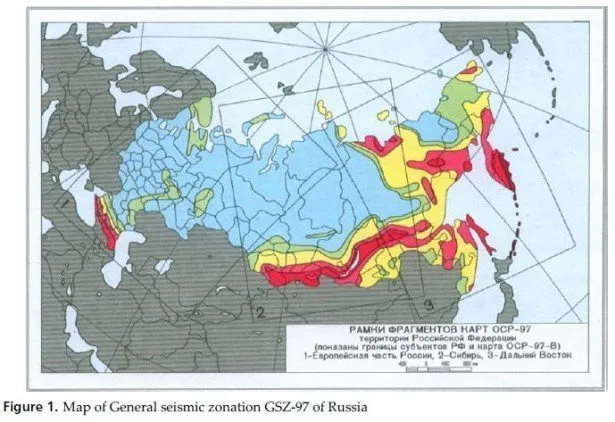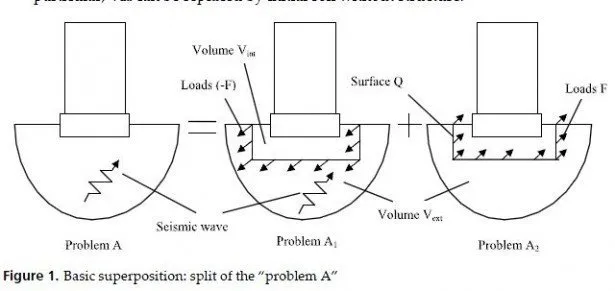The model shown in Fig. 5 was calibrated using records of vibrations and tilts of the bridge obtained during a full scale tests of the bridge were conducted on April 14, 1997, about two months before the official opening of the bridge. The objectives of the tests were: (i) to measure the deflection of the bridge pier under static loads, and (ii) to measure the free vibrations of the pier due to a sudden release of the static load. The instrumentation of the bridge (Fig. 6) was used to measure the bridge response during the pull tests. It consists of 76 accelerometers and 2 tiltmeters. The accelerometers were used to measure acceleration time histories of the response of the bridge. The two tiltmeters installed at locations 3 and 4 of pier P31 were used to measure the tilts of the pier.
The first pull test was a static test. Using a steel cable, a powerful ship pulled pier P31 in the transverse direction of the bridge. The pulling was at the top of the ice shield, approximately 6 m above the mean sea level. The force was increased steadily up to 1.43 MN, and then released slowly.
The second pull test was a dynamic test. In this test, the load was applied at a slow rate up to 1.40 MN and then suddenly released. This triggered free vibrations of the bridge, which were recorded by several accelerometers. The acceleration time history of the transverse vibrations recorded at the middle of span P31-P32 (location 9 in Fig. 6) along with the recorded tilts at locations 3 and 4 were used in the calibration of the model.
The parameter that was varied in the calibration process was the foundation stiffness.
Rotational springs in the longitudinal and transverse directions were introduced in the model, at the bases of the piers, to represent the foundation stiffness. A trial value of the stiffness of the springs was initially selected, and a number of iterations of static and dynamic elastic analyses were performed in order to determine the stiffness that provides a close match between the computed and the measured tilts and free vibrations of the bridge.
In each iteration, the tilts and the response were computed by using a load function closely representing the actual loading during the test. A modulus of elasticity of the concrete of 40,000 MPa was used in the analyses. This value was based on experimental data for the bridge [14], and is representative of the modulus of elasticity at the time when the test was conducted.
It was found that the model with a rotational stiffness of 3.35×109 kN·m/rad provides the best matching of the computed and measured responses. Figure 7 shows the measured and the computed acceleration time histories of the transverse vibrations of the bridge girder at the mid-span between piers P31 and P32, and Fig. 8 shows the Fourier amplitude spectra of these time histories. It can be seen in Fig. 7 that the computed response of the bridge is very similar to the measured response. Also, Fig. 8 shows that the Fourier amplitude spectra of the computed and the measured responses are quite close. Note that the first two predominant frequencies of the computed response of 0.51 Hz and 1.28 Hz correspond respectively to the 7th and the 18th modes of the model.
Table 2 shows the natural periods of the first ten modes obtained from dynamic analysis of the model. For illustration, the vibrations of the first five modes are presented in Fig. 9. It is necessary to mention that a similar model was developed by Lau et al. [15] using the computer program COSMOS [16]. The natural periods and mode shapes of that model are very close to those of the model developed in this study.
It is useful to mention that certain variations of the dynamic properties of the model are expected due to different effects. For example, the modulus of elasticity increases with the age of concrete and varies due to temperature changes. Also, the responses used in the calibration of the model are substantially smaller than those from expected seismic motions at the bridge location. A comprehensive investigation of the possible variations of the dynamic properties due to the foregoing effects conducted by [17] showed that these variations are insignificant from practical point of view, therefore, the model developed as described above is considered appropriate for the seismic evaluation of the bridge.






